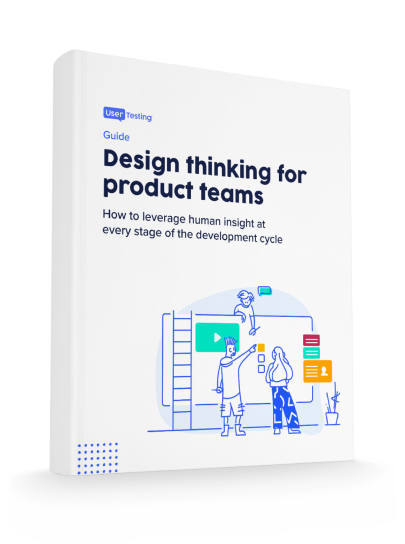
20 questions to ask throughout each product development stage

Product managers have a tough job. Often working across multiple teams, they’re constantly meeting with engineers and designers—leaving less than the ideal amount of time to talk with actual users. However, putting off asking your customers the right product questions during usability testing, customer interviews, and discovery conversations can create more problems for the entire team, wasted time, and unnecessary dollars spent.
Product teams innately care about user experience, but sometimes don’t involve their actual customers until a project is in its final product development stages before launch. Ensuring that the product your designing from visual design, user flows, navigation, copy, and more are all tightly connected pieces of the overall customer experience.
And you don’t need to be an expert researcher to unearth invaluable human insight from your customers. You just need to ask the right product questions throughout the development cycle to better understand their needs.
Product questions to ask throughout your product development life cycle
Early-stage discovery
Before you jump into developing solutions, spend time understanding what the needs and frustrations your customers are experiencing might be. Working a discovery interview into your current process allows you to uncover what your target market likes or dislikes about a specific experience, product, or activity.
Discover needs and frustrations
In this stage of development, you’re looking to better understand your customers. Often times, you won’t have an idea or an endpoint in mind, and that’s ok.
Ask your target market:
- What are the challenges you encounter when doing _____?
- How do you currently accomplish _____?
- What brands do you turn to in order to complete _____?
- What do you like about each brand?
Validate an idea
Once you’ve come closer to deciding a problem-solution, you’ll want to make sure your hunch resonates with your target market. Conducting a test or interview with your customers can reveal whether your concept is viable and has a strong product-market fit.
Ask your target market:
- What do you like about how you do it now?
- What don’t you like about how you do it now?
- Would something like _____ make your life easier?
- How much would you pay for something that _____?
Prototyping
Once you’ve started work on your solution, it’s a good idea to get customer feedback as soon as you have a wireframe. This will help you quickly figure out whether or not you’re on the right track. If you need to pivot, then you won’t have wasted time and engineering resources in the development process. You’ll also be able to settle internal disputes with designers by letting users make your case for you.
Ask your target market:
- Looking around this prototype, what do you think it’s for?
- What would you expect to be able to do?
- What’s the first thing you’d do here?
- If you had a magic wand, how would you change this?
Compare between two options
Often during this phase, you’ll have two (or more) working concepts that your users could test. A great way to uncover product insight is to determine which is better (or more viable) through a test that compares two different options.
Ask your target market:
- Which of these two versions makes more sense to you?
- Is there a piece of one version you prefer over the other?
Development and pre-launch
So you’ve reached a milestone. You’ve validated your product ideas, and you’re moving on to development. This is where interactive prototypes really come in handy, as you can watch users explore around your product as they naturally would.
Ask your target audience:
- What other jobs would you like to do here?
- Which features, if any, do you find the most/least useful?
- Does anything seem out of place?
Keep an eye out for the things your users aren’t doing, as well. If no one is using one of your core features, then that should raise a red flag!
Post-launch
Even after a new feature, product, or campaign has launched, keep monitoring to address challenges and continue evolving the experience to drive greater adoption or conversion. The questions you ask post-launch will help guide decisions on functionality or features you need to add or remove.
Ask your users:
- Why did you choose to do this over that?
- What would make doing _____ easier?
- What would you add or remove?
Human insight is your north star
The process of building customer-centric products and experiences is easier said than done. That’s why it’s imperative that you increase your exposure hours with customers—time spent seeing, hearing, and talking with them.
There’s no right or wrong way to uncover the needs and wants of your customers—unless you’re not doing it at all. Integrating fast customer feedback into your product development lifecycle will elevate your success and ensure you’re developing products that fill a need for your customers and your business.
Further reading
In this Article

Get your free guide
Get your free guide


